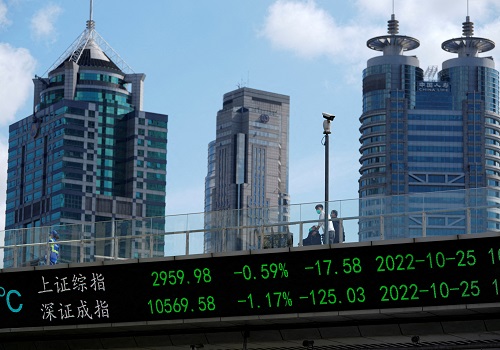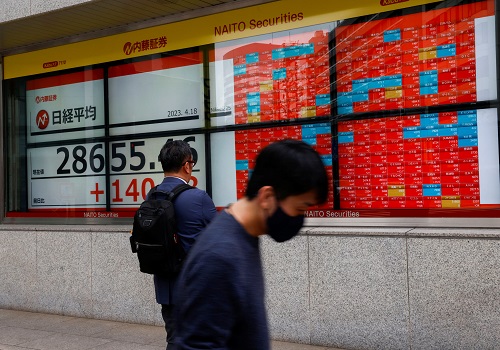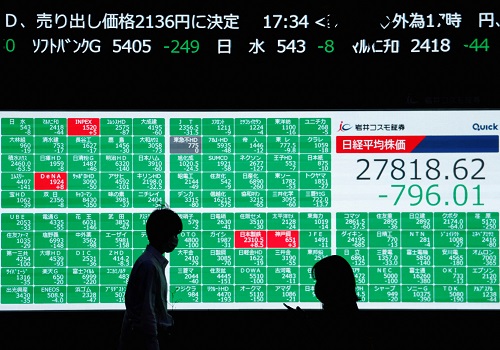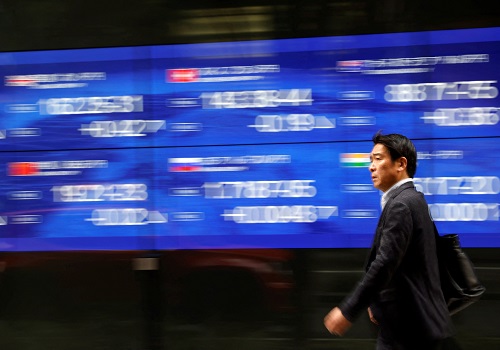Asian shares, US futures rise on debt ceiling deal

Follow us Now on Telegram ! Get daily 10 - 12 important updates on Business, Finance and Investment. Join our Telegram Channel
Asian shares and U.S. stock futures rose on Monday, thanks to a weekend deal by U.S. President Joe Biden and House Speaker Kevin McCarthy to suspend the government's debt ceiling, ending a protracted stalemate and providing some relief for investors.
After weeks of negotiations, congressional Republican McCarthy and Biden forged an agreement late on Saturday to avert an economically destabilising default to suspend the $31.4 trillion debt ceiling until 2025. The deal will now have to passes through the narrowly divided Congress.
The positive news lifted S&P 500 futures 0.2% in Asia while Nasdaq futures firmed 0.4%.
MSCI's broadest index of Asia-Pacific shares outside Japan gained 0.3%, after a 1.1% drop the previous week. Tokyo's Nikkei surged 1.3% to a fresh 33-year high.
Moving in the opposite direction, China's bluechips eased 0.1% while Hong Kong's Hang Seng index slipped 0.3%, weighed down by profit data for China's industrial firms on the weekend that reinforced growing signs of loss of momentum in the world's second-biggest economy.
"There may be an initial sliver of relief that may send yields a tad lower along with some U.S. dollar bump-up, alongside equities. But the vagaries of pushing the deal through Congress may hold back (the optimism)," said Vishnu Varathan, head of economics at Mizuho Bank in Singapore.
"And beyond that the overriding implications on liquidity squeeze from issuances to bolster cash that is running very low at the Treasury may perversely elevate yields and dampen equities. The dollar, though, may be bid."
Cash U.S. Treasuries were untraded in Asia on Monday, owing to the Memorial Day holiday, while futures were broadly steady. Two-year yields hit a 2-1/2 month high of 4.6390% on Friday on markets bets of higher Federal Reserve rates for longer.
U.S. shares rallied at the end of last week on hopes of a debt ceiling deal and on optimism about artificial intelligence. The Dow Jones Industrial Average ended a five-day losing streak on Friday, while the Nasdaq Composite Index and S&P 500 closed at their highest levels since August 2022.
"We always thought there was going to be a resolution, and now we have got that, so that removes some of the uncertainty for markets. But when we get past that, when the votes get passed and when we come back from Memorial Day, the question becomes what next?" said Tony Sycamore, market analyst at IG.
"Yes, we will get the relief rally in the short-term but then we have to start thinking about the June FOMC meeting, about inflation being stickier than expected, and the money being drained out of the markets."
Federal Reserve's preferred gauge of inflation - the personal consumption expenditures (PCE) price index - came in stronger than expected on Friday. Taken together with strong U.S. consumer spending, markets are now leaning towards a quarter-point hike from the Fed next month and seeing rates staying there for the rest of the year..
In the week ahead, more U.S. economic data will be on tap, such as job openings and non-farm payrolls which could influence Fed's thinking for the June decision. Economists polled by Reuters expect payrolls likely rose 195,000 in May, slowing from 253,000 the prior month.
In Turkey, the lira hovered at 20.04 against the dollar, just a touch above its record low of 20.06 hit on Friday, after President Tayyip Erdogan secured victory in the country's presidential election, extending his increasingly authoritarian rule into a third decade.
Elsewhere in the currency markets, the dollar index - a measure of the greenback against its major peers - was a touch lower at 104.17 as risk-sensitive currencies staged a rebound. However, it is still not too far from a two month high hit on Friday.
The yen slumped to a fresh six-month low of 140.89 per dollar in early trade, the euro nursed losses around a two-month trough of $1.0727 and the Aussie climbed 0.3% to $0.6535, trying to move away from a six-month low hit on Friday.
Oil prices rallied early Monday. Brent crude futures climbed 0.7% to $77.51 a barrel, while U.S. West Texas Intermediate crude was at $73.4 a barrel, or 1%.
Gold prices were 0.2% lower at $1,943.19 per ounce.
























